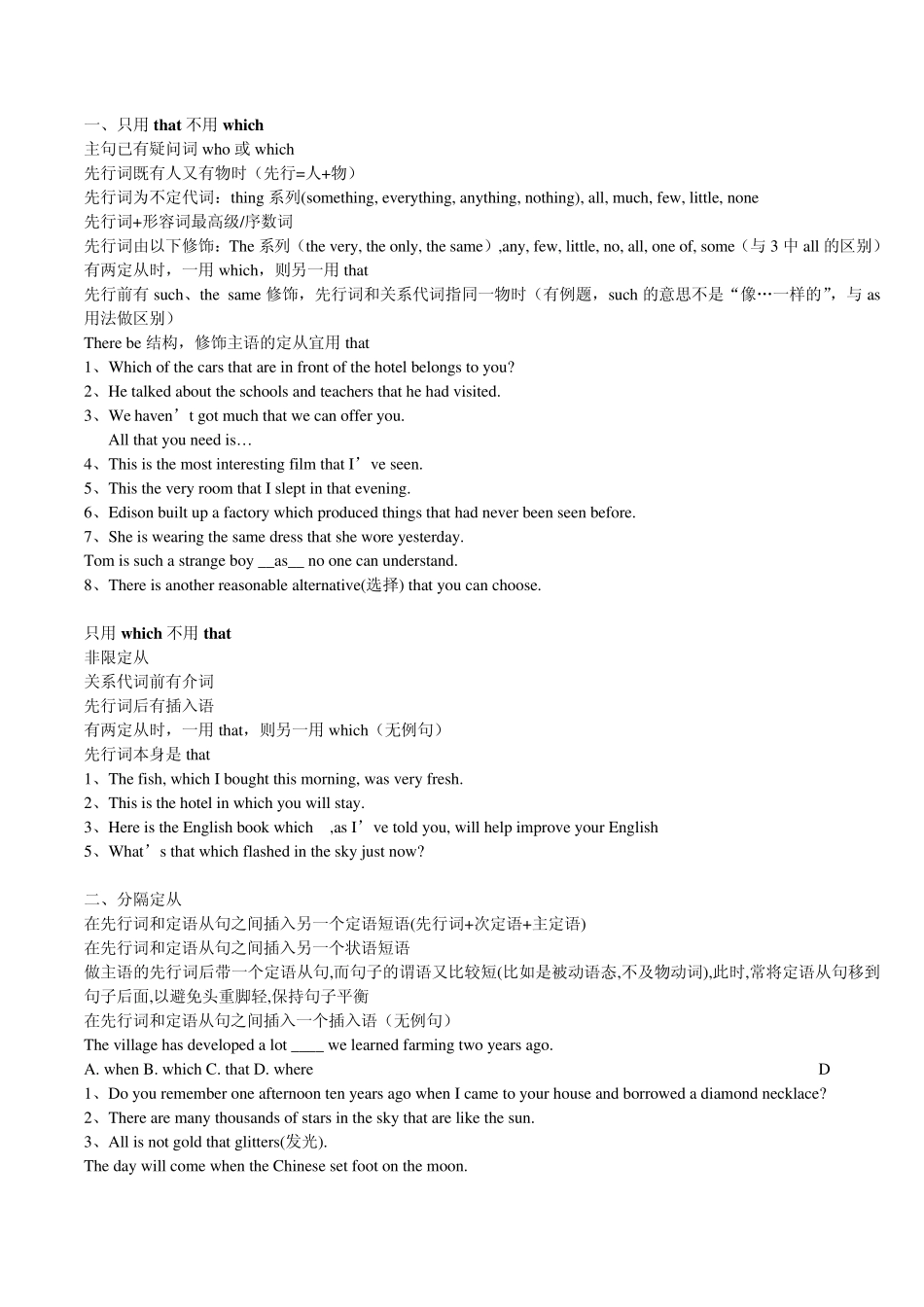一、只用that 不用w hich 主句已有疑问词who 或which 先行词既有人又有物时(先行=人+物) 先行词为不定代词:thing 系列(something, everything, anything, nothing), all, much, few, little, none 先行词+形容词最高级/序数词 先行词由以下修饰:The 系列(the very, the only, the same),any, few, little, no, all, one of, some(与3 中all 的区别) 有两定从时,一用which,则另一用that 先行前有such、the same 修饰,先行词和关系代词指同一物时(有例题,such 的意思不是“像„一样的”,与as用法做区别) There be 结构,修饰主语的定从宜用that 1、Which of the cars that are in front of the hotel belongs to you? 2、He talked about the schools and teachers that he had visited. 3、We haven’t got much that we can offer you. All that you need is… 4、This is the most interesting film that I’ve seen. 5、This the very room that I slept in that evening. 6、Edison built up a factory which produced things that had never been seen before. 7、She is wearing the same dress that she wore yesterday. Tom is such a strange boy __as__ no one can understand. 8、There is another reasonable alternative(选择) that you can choose. 只用w hich 不用that 非限定从 关系代词前有介词 先行词后有插入语 有两定从时,一用that,则另一用which(无例句) 先行词本身是that 1、The fish, which I bought this morning, was very fresh. 2、This is the hotel in which you will stay. 3、Here is the English book which ,as I’ve told you, will help improve your English 5、What’s that which flashed in the sky just now? 二、分隔定从 在先行词和定语从句之间插入另一个定语短语(先行词+次定语+主定语) 在先行词和定语从句之间插入另一个状语短语 做主语的先行词后带一个定语从句,而句子的谓语又比较短(比如是被动语态,不及物动词),此时,常将定语从句移到句子后面,以避免头重脚轻,保持句子平衡 在先行词和定语从句之间插入一个插入语(无例句) The village has developed a lot...


